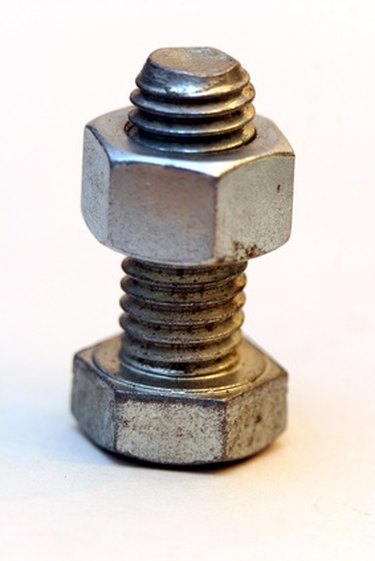
Screw threads are "V"-shaped inclined planes cut into material to join pieces of material together. A hex head bolt and hex nut could hold two pieces of metal together, while a threaded pipe could join a pipe and elbow together.
Threads
Video of the Day
The distance between the threads is the pitch, and designated by the number of threads per inch. Pitch and depth of the thread cut by the diameter of the hex bolt or pipe is standard. Pipe and hex nut threads both have a specific number of threads per inch. The outside diameter (OD) of the pipe or hex bolt determines the threads per inch. The mating internal diameter (ID) of the hex nut or pipe fixture matches the OD of the pipe or hex bolt. Since pipe diameters don't have diameters that match hex nuts and bolts, a hex nut won't screw onto a pipe.
Video of the Day
Hex Nut
The term hex identifies the shape of the head of a bolt or shape of a nut as being eight-sided. Bolt heads and nuts can also be square.
Hex Bolt and Hex Nut Threads
Bolts and nuts use standard thread designations based on the diameter of the bolt OD. They are either unified national course (UNC) or unified national fine (UNF). UNC has fewer threads than UNF. UNC is the most common.
Pipe Threads
Pipe threads are cut tapered to be leak proof. The taper is 1/16 of an inch or 3/4 of an inch a foot. The threads become shallower along the taper. Some pipe threads are straight depending on the application.